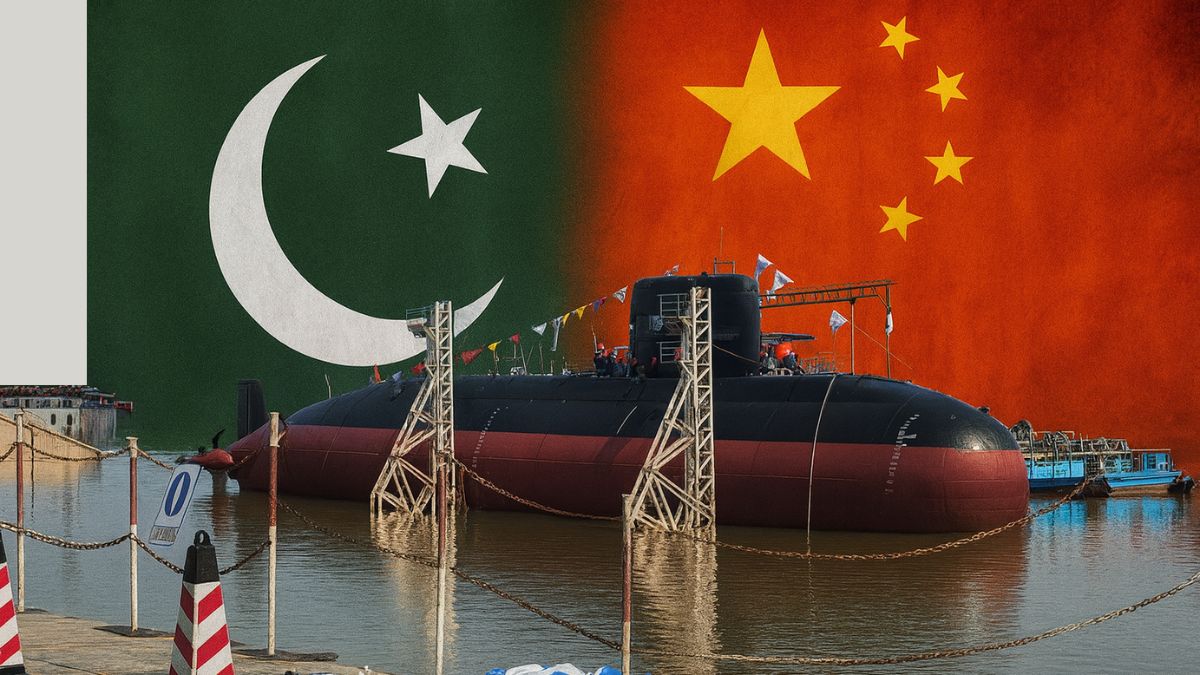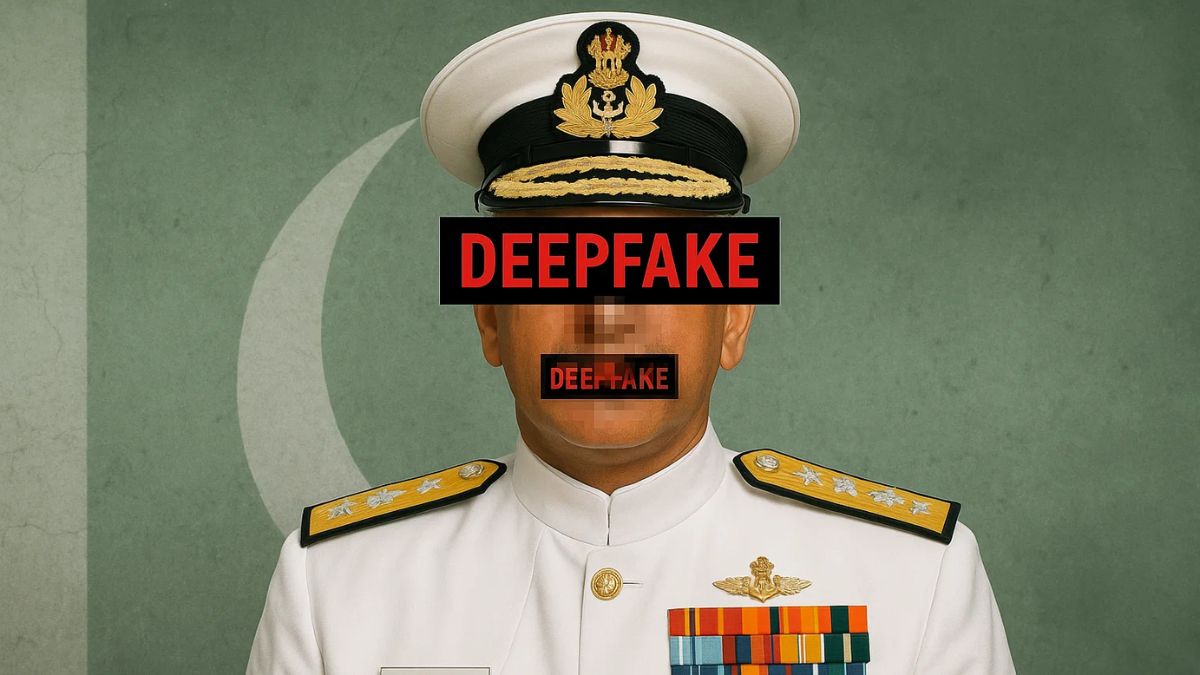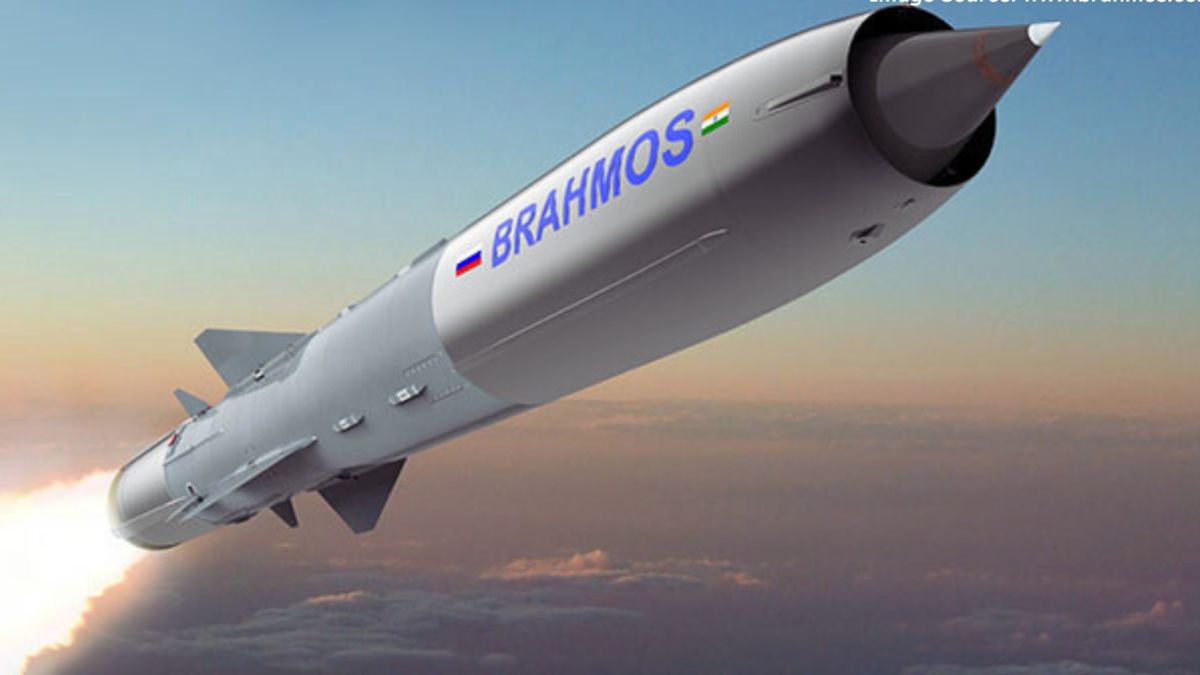Eight Hangor Submarines On Order, But Pakistan’s Full Fleet May Not Be Ready Before 2030s

Pakistan’s Hangor-class submarines face delays and engine doubts, while India strengthens its anti-submarine warfare edge in the Arabian Sea. Image courtesy: AI-generated picture via DALL-E
The launch of Pakistan’s third Hangor-class submarine this August was accompanied by sweeping claims from Islamabad that the boats will extend deterrence across the Arabian Sea and challenge India’s freedom of manoeuvre.
The deal with China, finalised in 2015, is the largest naval procurement in Pakistan’s history and has been pitched as a force multiplier that will transform the Pakistan Navy’s undersea arm.
However, defence and security establishment officials caution that the project is already years behind schedule, relies on unproven technology, and faces steep industrial and economic hurdles.
Far from being a decisive “game-changer,” the Hangor fleet is unlikely to be complete before the early 2030s, by which time India’s anti-submarine warfare (ASW) network will have matured further.
Why has the Hangor programme fallen behind schedule?
When Pakistan signed the deal in 2015, the plan was to receive four submarines from Chinese shipyards by 2023 and then assemble another four at Karachi Shipyard by 2028.
The schedule has slipped considerably. PNS Hangor was launched only in April 2024, followed by PNS Shushuk in March 2025 and PNS Mangro in August 2025. None has entered operational service yet, and the earliest induction is now expected in 2026.
Officials say Karachi Shipyard has no prior experience of constructing an air-independent propulsion (AIP) submarine. Even routine mid-life upgrades of older Agosta-90B boats had to be outsourced to Turkey.
With half the Hangor order to be built locally, defence planners believe delays of two to three years per hull are likely, which would push the final deliveries into the 2030s.
How reliable are the engines that will power the boats?
The Hangor-class is based on China’s Type-039A Yuan-class submarine. The original design relied on German MTU diesel engines, but Berlin blocked their export for Chinese military use. Beijing replaced them with its indigenous CHD620 engines.
These engines are untested outside China. Thailand’s S26 submarine order was stalled for years over this issue, with Bangkok reluctant to accept the CHD620 without extensive warranties and testing.
Pakistan has little such leverage and will be operating the new engines without the benefit of long-term performance data. According to one official, “Pakistan has become the proving ground for a technology that has never been validated in export service.”
Will the Hangors deliver the A2/AD reach Islamabad promises?
Islamabad’s messaging stresses stealth features such as Stirling AIP, double-hull design and non-magnetic steel. Yet experts point out these are not unique. India’s Kalvari-class (Scorpene) submarines already use similar technologies and are slated for fuel-cell AIP upgrades that are quieter than Stirling systems.
Conventional submarines like the Hangor are effective in coastal defence and chokepoint denial, but they lack the endurance and mobility to sustain patrols deep in the Indian Ocean.
Pakistan has only two bases — Karachi and Ormara — and no nuclear-powered submarines, overseas facilities or replenishment assets. “At best, the Hangors complicate operations near Pakistan’s coast,” a security establishment source said. “They cannot enforce an A2/AD shield across the Indian Ocean.”
How is India preparing to counter the Hangor fleet?
Pakistan’s narrative often highlights the difficulty of anti-submarine warfare, likening it to searching for a needle in a haystack. India, however, has invested heavily in ASW platforms and sensors.
The Navy now fields 12 Boeing P-8I Poseidon aircraft, inducted the first Arnala-class shallow-water ASW craft in June, and is deploying 24 MH-60R Seahawks equipped with dipping sonars. Indigenous systems like the HUMSA-NG sonar, Maareech anti-torpedo decoy and Varunastra heavyweight torpedo strengthen the arsenal further.
Operational history supports this layered approach. In 2019, after the Balakot airstrikes, an Agosta-90B submarine deployed by Pakistan was tracked and forced to retreat westwards.
During Operation Sindoor in 2025, Pakistan’s navy largely remained in harbour while India’s carrier group operated off Karachi. These episodes demonstrate that while submarines are stealthy, they are not untouchable.
What does the Hangor programme mean strategically?
The Hangor-class represents Pakistan’s ambition to modernise its submarine fleet, but it also exposes its dependence on Beijing.
The $5–6 billion deal is the costliest in Pakistan’s naval history and will add long-term sustainment pressures to an economy already under repeated International Monetary Fund (IMF) bailouts. Karachi’s limited capacity ensures reliance on Chinese advisors for years, making the fleet vulnerable to supply chain and political disruptions.
Defence officials argue that the Hangors will strengthen Pakistan’s littoral defences but not alter the wider balance. India retains nuclear-powered submarines, aircraft carriers and a maturing ASW grid, ensuring that the advantage at sea remains with New Delhi. The narrative of a transformative A2/AD capability, they say, is running well ahead of reality.







